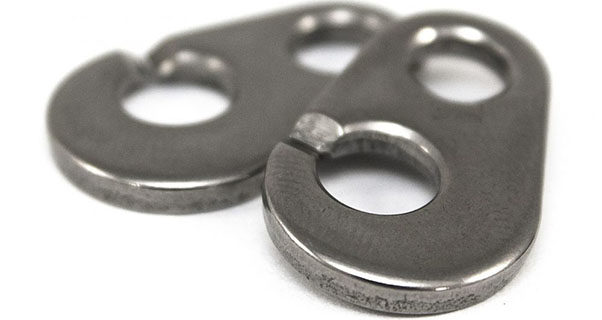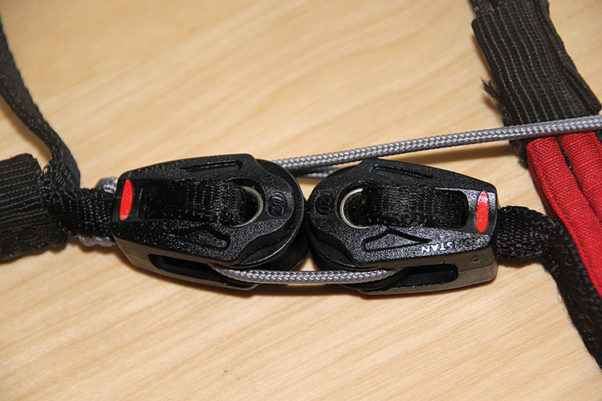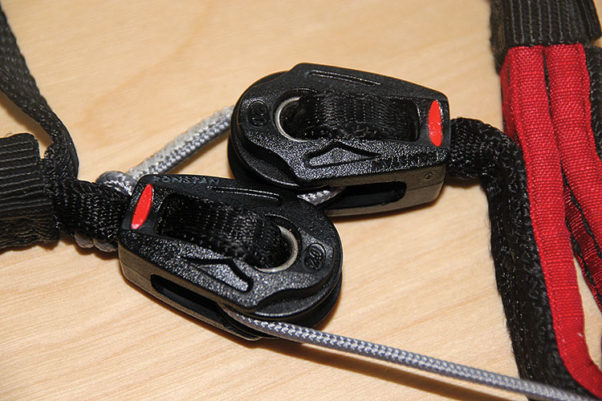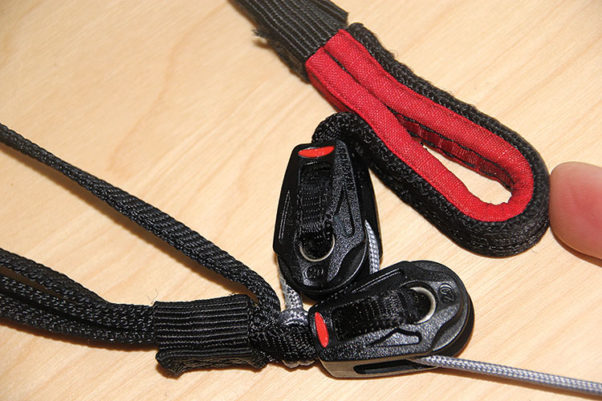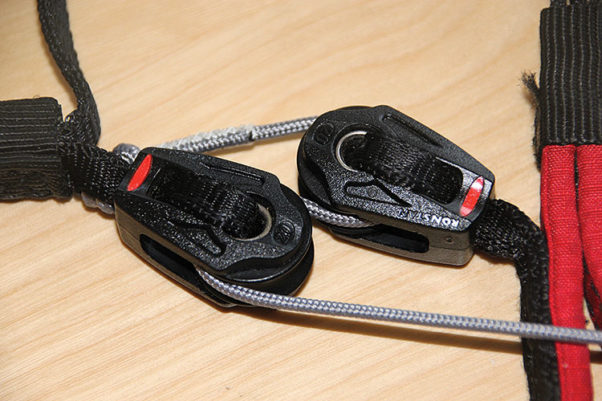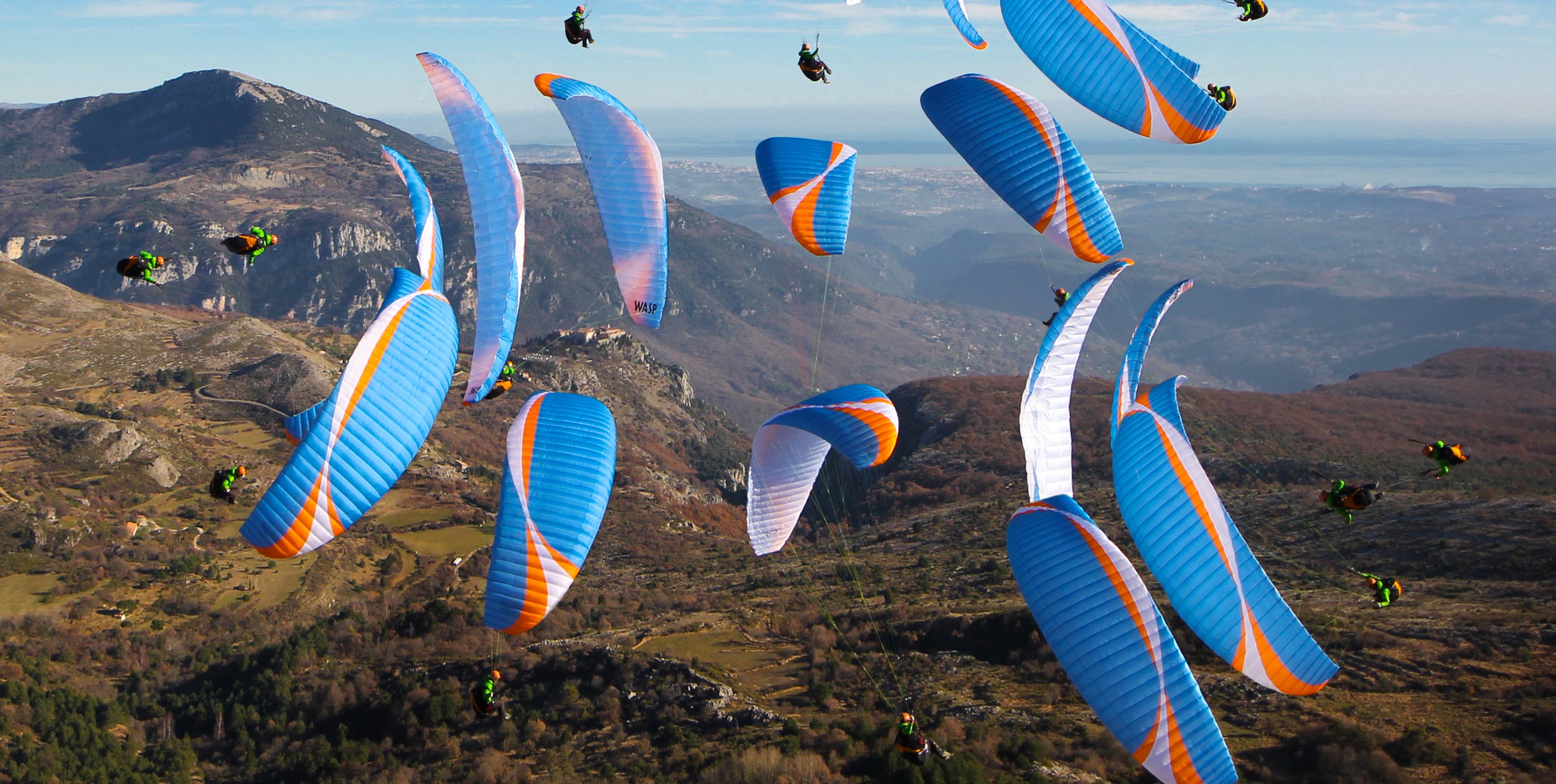You’ve heard of ‘pulley-to-pulley’ but what does it mean? Bruce Goldsmith explains…
The standard setup for speed systems on production wings is to use Brummel hooks on the risers. This makes a simple, easy link to the speed system on the harness and speedbar. They work well between different manufacturers as Brummel hooks have standard dimensions.
I certify my gliders with several different test houses, and it is usual to see that test pilots do not use Brummel hooks on the risers for the test flights. This is because Brummel hooks can limit the range of the speed system.
It is actually the pulley configuration that should define the range of the speed system and not the Brummel hooks. Brummel hooks cannot be allowed to limit the speed range because that depends on the harness configuration rather than the glider being certified.
Pulley-to-pulley?
Maximum speed on the risers of a certified glider is usually known as ‘pulley-to-pulley’. This may sound simple, but there are a few tricks that can make a huge difference to the max-speed achieved. Generally speaking 1cm extra range on the speed system means 1km/h extra speed.
1. End-to-end: This is when the two pulleys come up against each other end-to-end (typically 10cm).
2. Axle-to-axle: This is typically 2cm more than end-to-end and so is 2km/h faster (typically 12cm).
3. Overlapping: Another 1cm can be gained by overlapping the pulleys (typically 13cm).
4. Maximum: Pulls down the whole A-riser with the pulleys, giving more distance. This one depends on the position of the lower pulley on the A-riser (typically 13cm – no change).
The ‘1cm = 1km/h’ is only a general rule and depends on the individual glider, but I use it.
Factors that affect this are chord length and the number of rows of lines. 1cm will mean more acceleration on a two-liner than a three-liner, and more on a three- than a four-liner.
Certification
What speed is used for certification? I asked Alain Zoller at testing house Air Turquoise. “We don’t use Brummel hooks – we link the speedbar line directly to the riser line. Then we simply push the bar as far as it will go. We carefully measure the range that was achieved in the flight tests in the workshop afterwards.” A clear answer, and no need to worry about the above details.
The practical limit of the speed system depends on the way the line runs though the pulleys. If it runs in an oval route (End-to-End, 1 above) then the pulleys will stop end-to-end. If the line is threaded in an ‘8’ (above) then more range is achieved – often the difference between positions 1 and 3 above.
So that can be 3cm more. I wonder who checks how the line is threaded for certification and how for production? It could be a cause for differences.
All this means that the top speed as defined by the speed system is a bit of a vague notion. The FAI are aware of all this and when defining the CCC regulations for competition wings they went to great lengths to stop this becoming a problem in competitions. (See FAI regulations 2016 Rev3.5.)
My competition setup
My standard setup in competition was to remove the Brummel hooks. I used one line running though the riser all the way to the speedbar. This unfortunately meant I could not disconnect the glider from the harness, but there were two advantages.
First, there was no join in the line or Brummel hooks meaning they could not come undone by accident. Second, the range was not limited by the join locking-out on the harness hole or pulley.
This is less important in competition nowadays because speed range is strictly limited by certification; and less travel is required on the speedbar because of two-liners. I liked the clean simplicity of this solution and I still recommend it to some pilots for comp flying.
What does this all mean?
Both the FAI and the EN get it right – what really counts is the difference between the front and the back risers. Brummel hooks, pulleys and the rest simply help to achieve that difference. This length difference is called the ‘accelerator range’ on every certified glider.
Top speed of a glider is achieved when the certified accelerator range is activated. Check you can really achieve this on your glider. If not, your first step may be to change how you thread your speed line.
You can remove the Brummel hooks without affecting the certification of a glider – so long as the speed range is not increased above the certified limit written on the certification label.
This article was first published in Cross Country 171 (July 2016). Bruce Goldsmith is a paraglider designer and former Paragliding World Champion. He has written for Cross Country for more than 20 years. If you enjoyed this sample article, perhaps you’d consider subscribing and supporting the world’s only international free flying magazine?

